Last Chance to Catch NYC's Holiday Notalgia Train
We met the voices of the NYC subway on our nostalgia ride this weekend!


Brighton Beach in southern Brooklyn is a Russian and Central Asian enclave bordering Sheepshead Bay and Coney Island. Originally mostly farmland, Brighton Beach quickly developed into a popular resort spot with hotels, a casino, a race track, and other amenities. The area became a haven for many Jewish immigrants around the 1920s, and many Holocaust survivors and Soviet immigrants arrived in the following decades. Today, the neighborhood is referred to as “Little Odessa,” although there are plenty of Georgian, Uzbek, Uyghur, and Turkish spots by the beach and boardwalk. Here are the top 10 secrets of Brighton Beach!
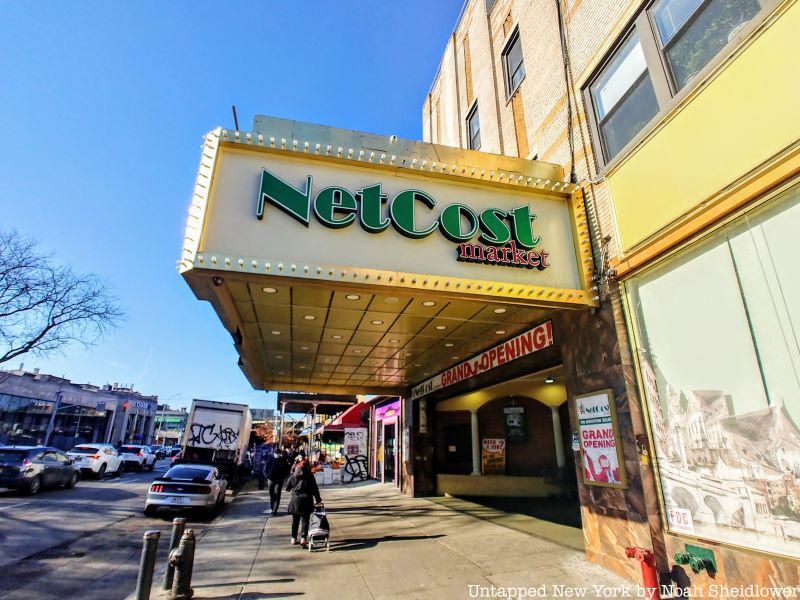
Today, NetCost Market, a Russian grocery store, operates in the space of the old Millennium Theatre, built in 1934. The 1,400-person capacity theater started out as a movie house and began featuring live performances in 1996. The theater put on performances by touring Russian pop acts, as well as Russian theater and comedy troupes. In the theater’s later years, basically every performance was in Russian and catered to the local crowd, although there were posters up of Ray Charles and Gloria Gaynor.
The Millennium closed in 2014, and in its place was the slightly smaller Master Theater, which had a short run but closed in 2019. In its place is now NetCost, one of the most popular supermarkets in the area with a few locations across Brooklyn, Queens, New Jersey, and Pennsylvania. The entrance to the supermarket still features a ticket booth and velvet ropes, although the interior is quite modern with a hot food bar.
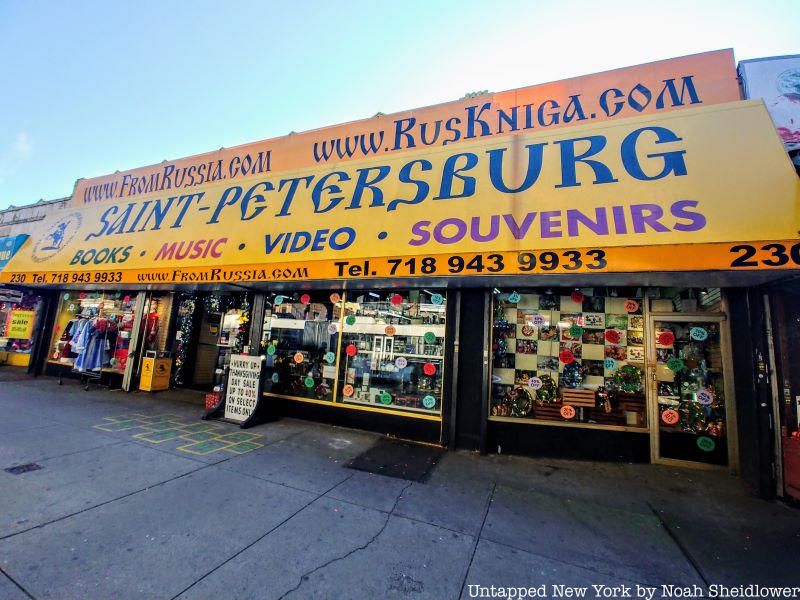
St-Petersburg Bookstore is often considered one of the world’s largest Russian booksellers outside of Russia, with a collection of over 10,000 English and Russian-language books. These include everything from cookbooks to religious texts to philosophy and history volumes. The collection includes Russian classics by Anton Chekhov, Fyodor Dostoevsky, Mikhail Lermontov, Leo Tolstoy, and dozens of others. In addition to language study books, the bookstore also carries calendars and posters, including some reproductions of Soviet-era signs.
Beyond just books, the store carries all sorts of gifts, including imperial eggs, lacquer miniatures, dolls from Russian folklore, jewelry boxes, decorative glassware, and a specific collection of Ukrainian products. Clothing includes shawls and Russian hats, Russian jewelry, shirts with Russian-language designs, and dresses. The store also carries a large selection of porcelain goods, as well as dozens of matryoshka nesting dolls. The store is usually packed with tons of items, which may take over an hour to look through, but St-Petersburg also has a full website in both Russian and English to order goods.
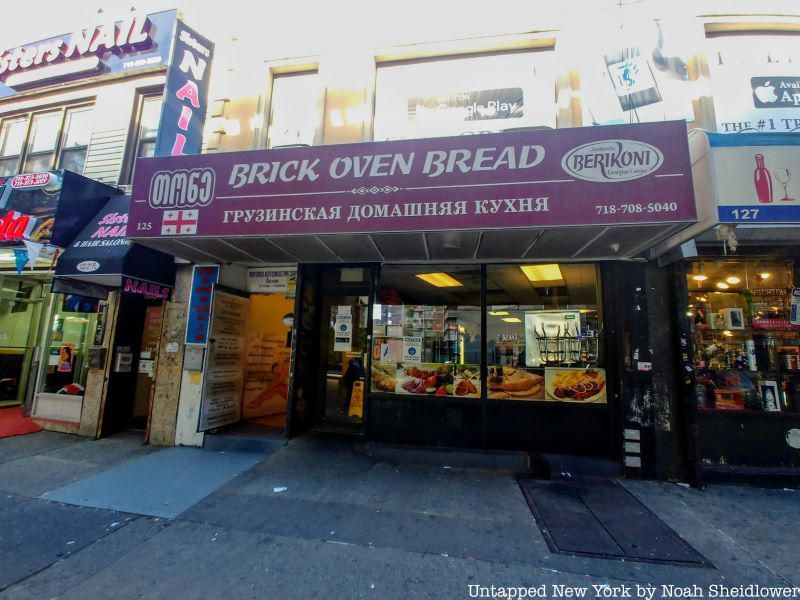
Brighton Beach’s nickname of “Little Odessa” has certainly stuck over the years, since many Russian and Ukrainian restaurants and shops are still bustling. Taste of Russia, for instance, is a very popular market with tons of hot food options, baked goods, and a large selection of packaged foods. But the area has much more diversity than just Russian and Ukrainian influences: there are many shops owned and operated by Georgian, Uzbek, Turkish, and Uyghur migrants.
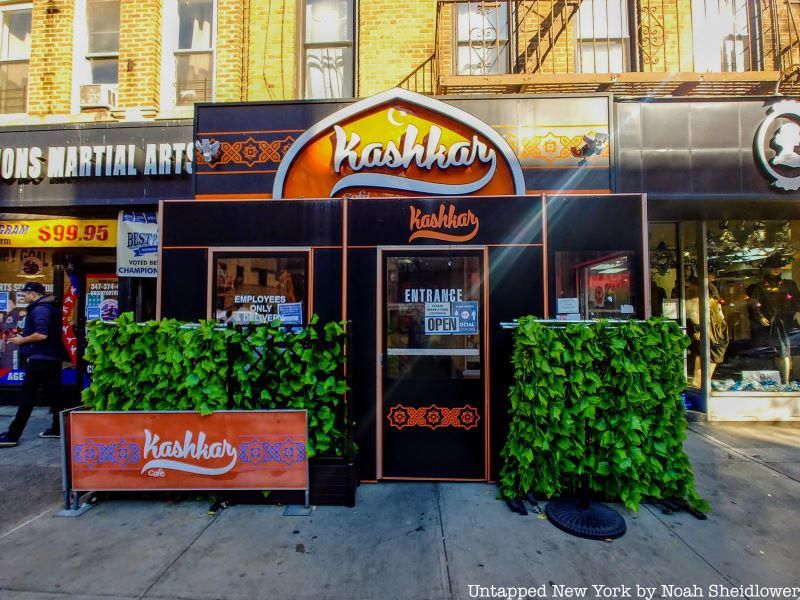
Shops like Little Georgia and Berikoni Georgian Bakery serve fresh khachapuri, breads, khinkhali dumplings, cold salads, meats, and desserts for cheap. Güllüoglu Baklava and Beyti Turkish Kebab offer a taste of Turkish cooking, while Kashkar Cafe serves up traditional Uyghur food from northwest China. Home Made Cooking Cafe is one of the neighborhood’s most popular Uzbek options, with dishes like samsa and plov at the forefront. Tashkent Supermarket, named after Uzbekistan’s capital, is one of the most popular stores in the whole area, with tables of hot food options serving dozens of Central Asian dishes.
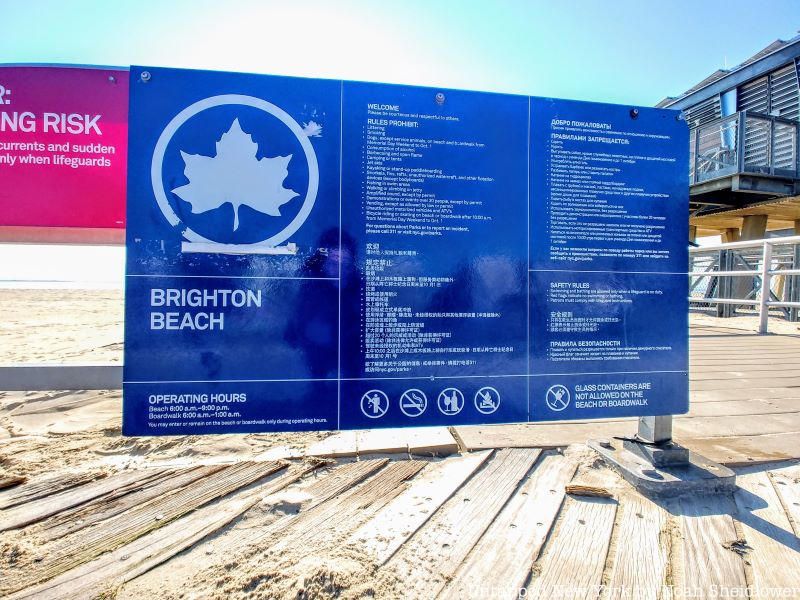
Brighton Beach, until the 1860s, was mostly farmland, and many English families had residences here; Brighton Beach was part of the English settlement of Gravesend, which was the only English settlement of the original six towns of Kings County. In 1868, though, William A. Engeman built a resort in the area as one of the first major development projects, which was eventually named “Brighton Beach” as an allusion to the English resort town of Brighton. The hotel could house 5,000 people per night and could feed 20,000, catering mostly to upper-class patrons.
Right by the hotel, Engeman opened the Brighton Beach Bathing Pavilion in 1878, with a capacity of 1,200. But the Brighton Beach Hotel was under threat from beach erosion and very high tides, so a proposal was put forward to move the building inland. In the largest building move of the 19th century, hydraulic jacks lifted up the building, under which 24 lines of railroad tracks were laid. The hotel was pulled by 112 railroad cars, which were themselves pulled by six steam locomotives. Those who stayed at the hotel often attended concerts at the Brighton Beach Music Hall, whose composer-in-residence was John Philip Sousa for a few years.
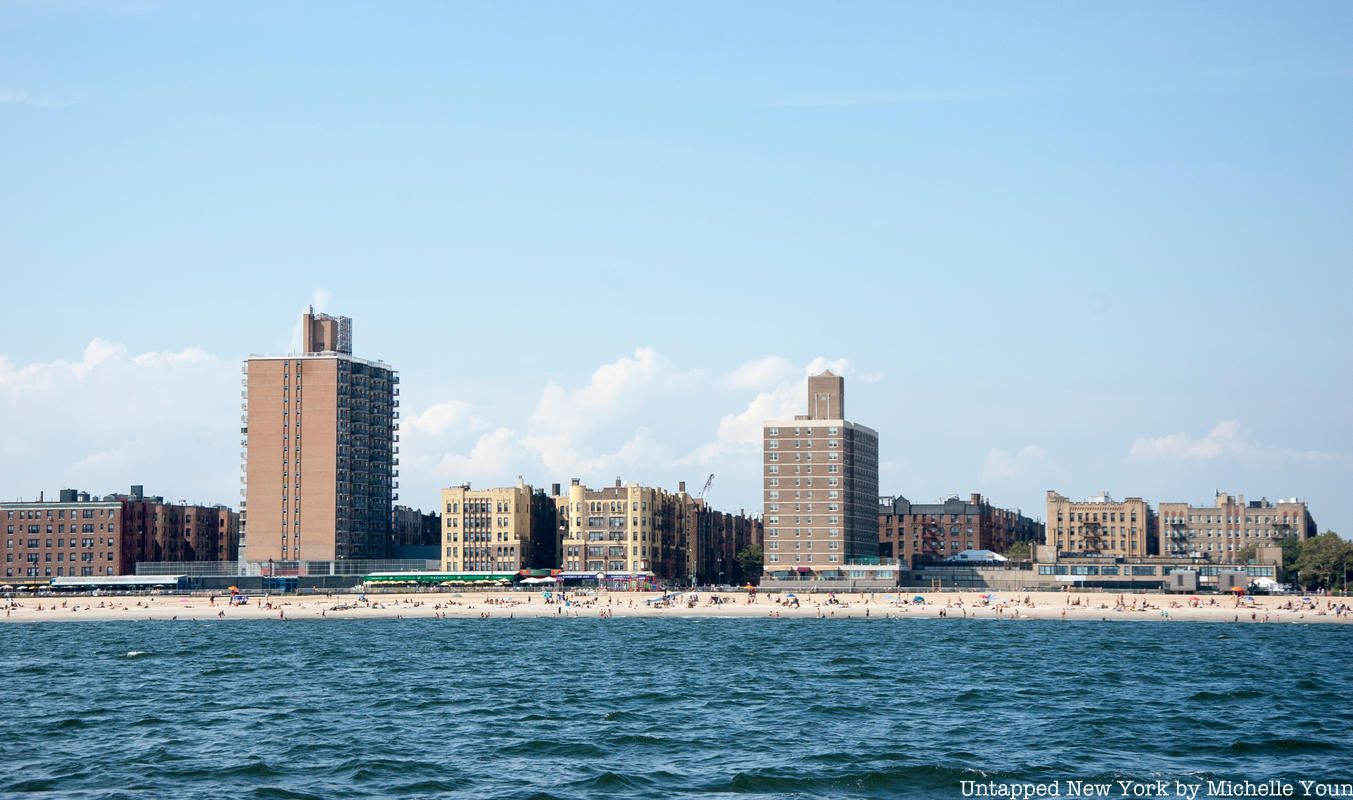
The legendary playwright Neil Simon, perhaps best known for his play The Odd Couple, wrote Brighton Beach Memoirs with the Brooklyn neighborhood in mind. The play is semi-autobiographical, drawing from his years growing up Jewish in New York City. The 1982 play is filled with relatable Jewish humor and representations of Jewish culture that uplifted many. The plot takes place in Brighton Beach during the Great Depression, focusing on Jewish teenager Eugene Morris Jerome and his experiences with puberty and a search for identity.
Although much of the plot is fictional, the play’s setting does match the ethnic makeup of Brighton Beach in the 1930s. Many first- and second-generation Jewish Americans settled in Brighton Beach in the years prior to the Great Depression, some moving from the Lower East Side and others coming directly from Ellis Island. The New Brighton Theater converted to the country’s first Yiddish theater in 1919 to appeal to the local audience.
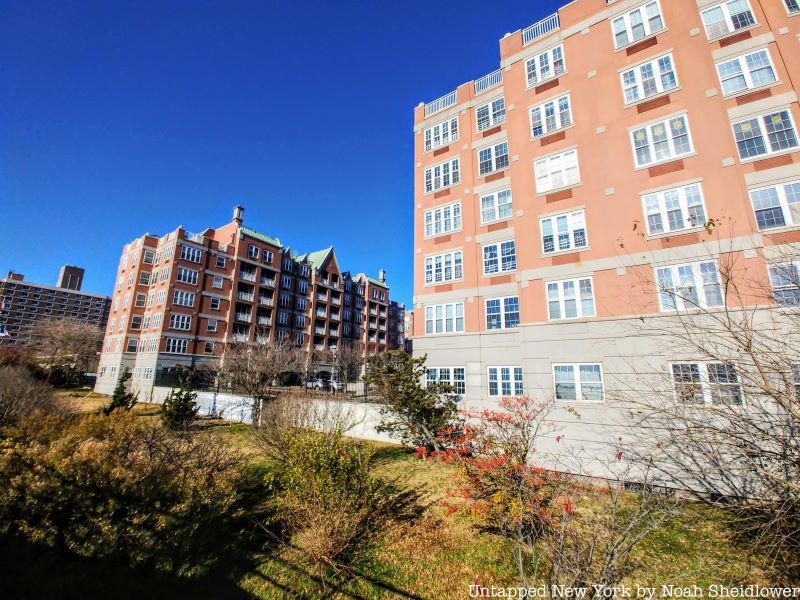
The Brighton Beach Race Course was a thoroughbred horse racing site opened in 1879 by William A. Engeman. The one-mile racecourse was built in the back of the Brighton Beach Hotel, bounded by Ocean Parkway on the west and Coney Island Avenue on the east. The race track attracted many wealthy patrons, in part because gambling was legal until 1908.
The Brighton Derby for three-year-olds was perhaps the most popular event, but the racecourse also hosted the Brighton Handicap for all other horses. Also run were the Brighton Junior Stakes, Brighton Mile, and Brighton Oaks. After gambling was made illegal, motor racing events were held at the track. The track was then known as the Brighton Beach Motordrome as an automobile racing course, but the facility was torn down in the 1920s.
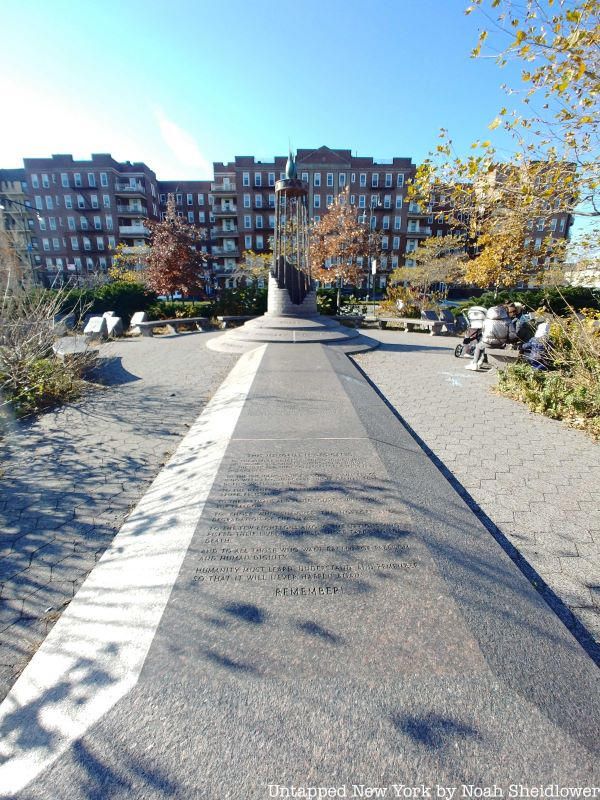
Because Brighton Beach was a prominent Jewish neighborhood prior to World War II, many Holocaust survivors moved to the area to be with family or fellow Jews. As of 2011, a majority of the 55,000 Holocaust survivors living in New York City called Brighton Beach home. The area’s Jewish population grew in the 1970s due to the migration of predominantly Ashkenazi Jews from Ukraine and Russia. The area quickly became known as “Little Odessa,” and many more Jews settled here following the 1991 fall of the Soviet Union. These more recent waves of migration also brought over more Holocaust survivors, many of whom continue to share their stories with locals today.
In nearby Sheepshead Bay about a five-minute walk from Brighton Beach’s main stretch is Holocaust Memorial Park, the only public Holocaust memorial park in New York City. At the park is a 14.5-foot sculpture of granite and exposed steel that includes a bronze “Eternal Flame” and the word “Remember.” A granite slab details briefly the events of the Holocaust. Granite markers surrounding the sculpture are inscribed with names, places, and historical events that are related to the Holocaust.
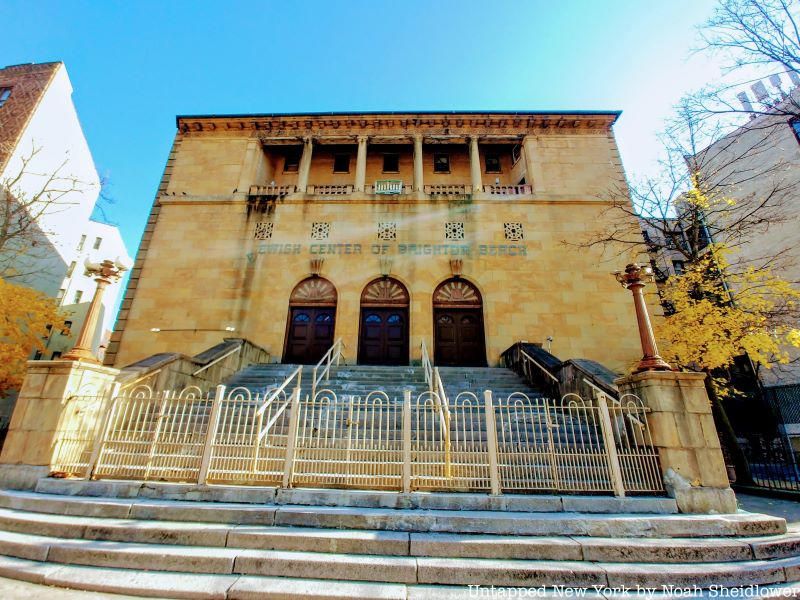
As one of the only institutions on the National Register of Historic Places in Brighton Beach, the Jewish Center of Coney Island (also called the Jewish Center of Brighton Beach) is a historic synagogue at 2915 Ocean Parkway. It was built between 1929 and 1930 during the height of Jewish immigration to the neighborhood. The Renaissance Revival structure is trapezoidal shaped and features a facade of gold-colored stone. The interior features ornate stained glass windows, and the synagogue has been featured in Nicholas Cage’s film Lord of War.

Although technically in Manhattan Beach, the Brighton Ballet Theater, also called the School of Russian American Ballet, is a nonprofit located on the campus of Kingsborough Community College. About 400 children attend the school, and hundreds more participate through New York public schools. All instructors are professionally trained dancers who studied in the U.S., Russia, or Ukraine and taught or performed with major dance companies worldwide.
Each year, the Brighton Ballet Theater puts on two full productions and smaller presentations across the tri-state area. The school hosts the annual festival “The World of Dance” and puts on frequent performances of The Nutcracker. Since 1987, the school has put on everything from Les Sylphides to selections from La Bayadère.
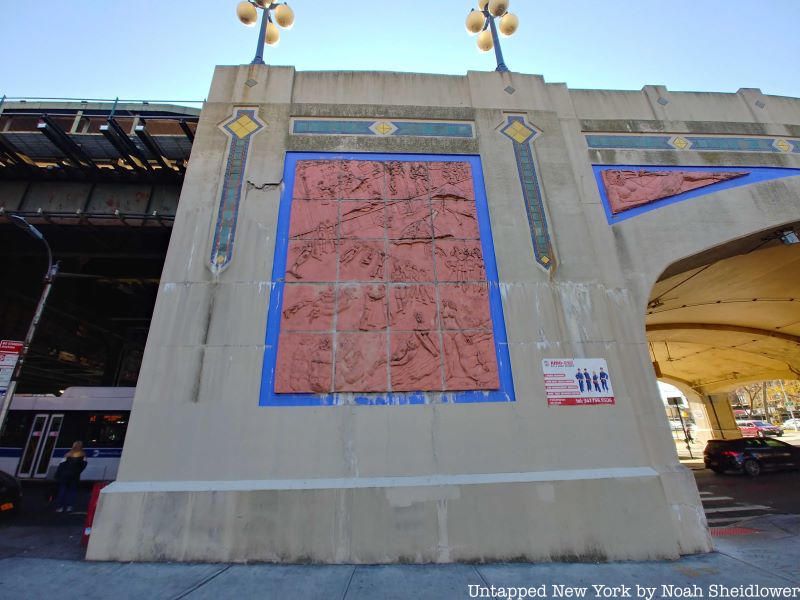
The Ocean Parkway station on the western end of the main stretch of Brighton Beach is a historic elevated Q station. The station features an artwork called Coney Island Reliefs by Deborah Masters, which consists of 128 reliefs inspired by Coney Island’s sites and people. The artwork was created in 1996 and was meant to be installed at Ocean Parkway, but station defects pushed back the installation date. Some pieces were displayed at Long Island University in 2001, but the reliefs were kept at a bus depot in the Bronx until 2009 when they were finally put up at the station.
Masters created the reliefs in cast concrete, tinted a terracotta color, and panels fit within the recesses in the viaduct. The reliefs portray scenes from the history and legends of Coney Island, including the mermaid Neptune, the beach, boardwalk, and amusement park. In one of the largest sections of the artwork, the Cyclone zigzags past crowds of people.
Next, check out 27 Secrets of NYC’s Coney Island!
Subscribe to our newsletter